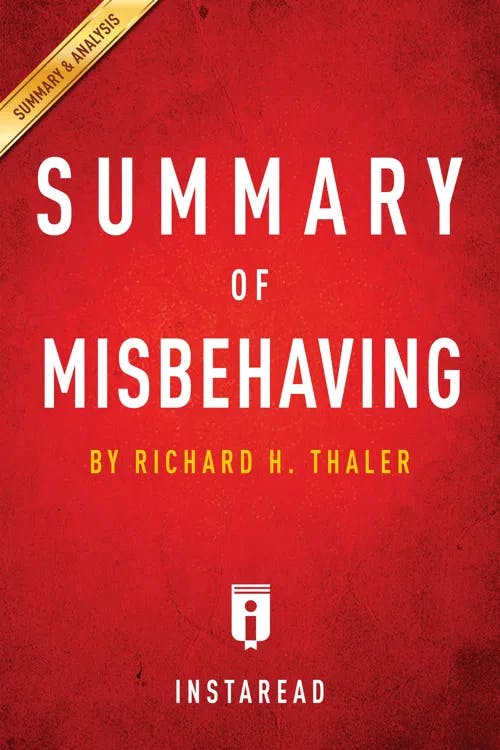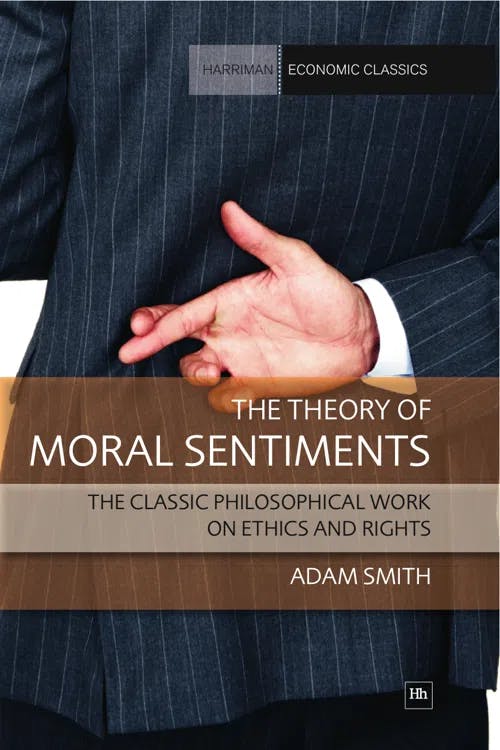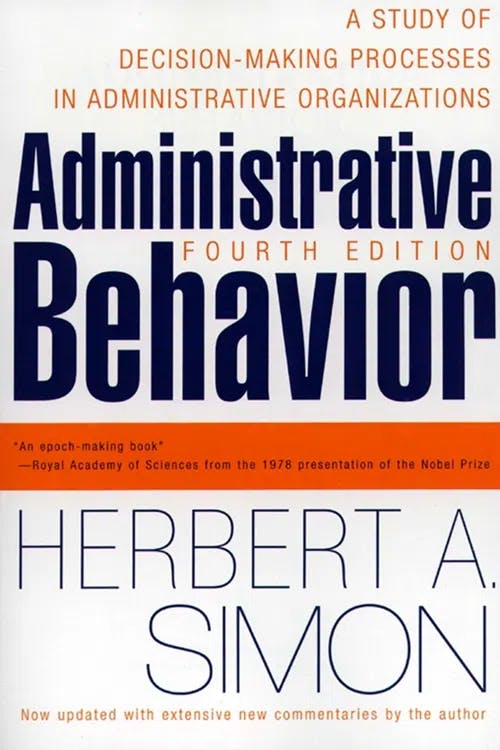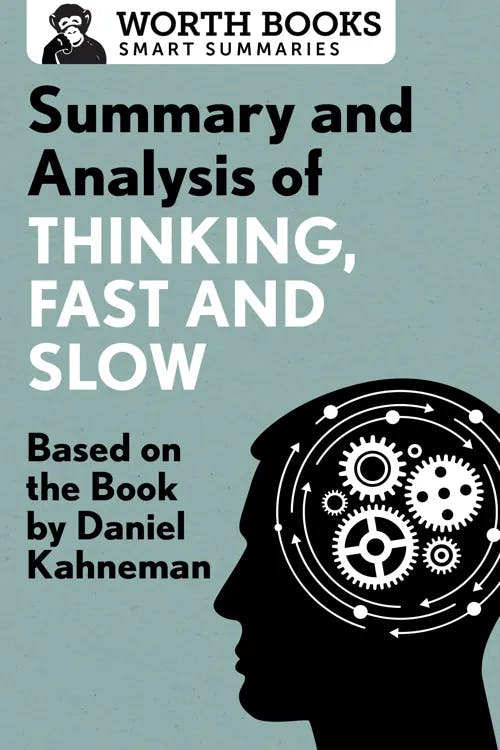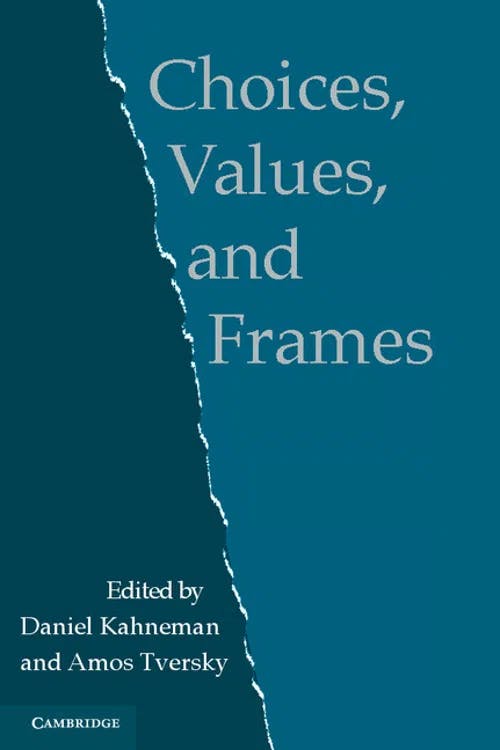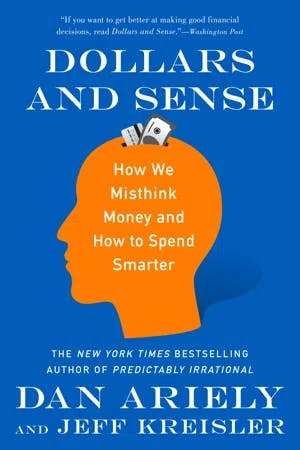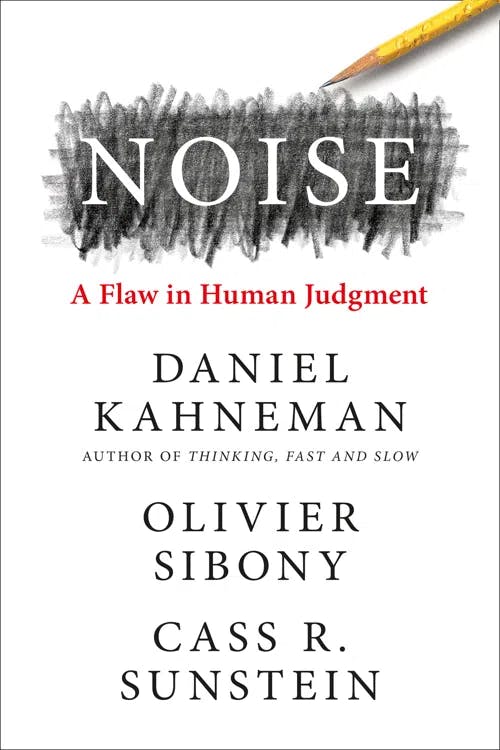What is Behavioral Economics?
MA, Management Science (University College London)
Date Published: 04.10.2023,
Last Updated: 07.02.2024
Share this article
Defining behavioral economics
Behavioral economics (BE) is the study of economics from a psychological perspective. It aims to understand how individuals actually behave in different economic contexts by challenging the long-standing assumption that people behave rationally. Indeed, most of neoclassical economic theory assumes that individuals are rational, meaning they will act in their best self-interest to maximize profits or welfare.
The father of behavioral economics, Richard Thaler, refers to these rational individuals as “Econs” (short for Homo economicus in Latin). These are people with the infinite ability to behave according to logical, theoretical principles and remain unmoved by emotions when making decisions. However, in his book Misbehaving (2015), Thaler explains that the world is not made up of these so-called Econs, but of humans who “misbehave” and act irrationally under many scenarios. As explained in Summary of Misbehaving,
The traditional economic theory of the 1970s presumed that people made economic decisions rationally. In this economic vision, rational individuals—or Econs, as Thaler calls them—know what they want, and they know how much they value the things they want.
Behavioral economics, on the other hand, argues that the world is populated not by Econs, but by Humans. Humans are not always rational. They don’t always know what they want, or how much they value the things they want. In terms of traditional economic theory, Humans misbehave. (2016)
Instaread
The traditional economic theory of the 1970s presumed that people made economic decisions rationally. In this economic vision, rational individuals—or Econs, as Thaler calls them—know what they want, and they know how much they value the things they want.
Behavioral economics, on the other hand, argues that the world is populated not by Econs, but by Humans. Humans are not always rational. They don’t always know what they want, or how much they value the things they want. In terms of traditional economic theory, Humans misbehave. (2016)
This observation, Thaler believed, was of special relevance in a policy-making context. Thaler argued that, when drafting new policies, it is extremely important to take the irrational (and realistic) reactions of populations into account in order to avoid unintended consequences (such as the financial crisis of 2008).
A brief history of behavioral economics
Although contemporary economist Richard Thaler is known as the “father of behavioral economics,” the origins of this discipline can be found earlier. Indeed, Adam Smith, English philosopher and economist of the 18th century, already questioned the concept of rationality in some of his less famous works such as The Theory of Moral Sentiments (1759, [2010]).
The administration of the great system of the universe ... the care of the universal happiness of all rational and sensible beings, is the business of God and not of man. To man is allotted a much humbler department, but one much more suitable to the weakness of his powers, and to the narrowness of his comprehension: the care of his own happiness, of that of his family, his friends, his country.... But though we are ... endowed with a very strong desire of those ends, it has been entrusted to the slow and uncertain determinations of our reason to find out the proper means of bringing them about.
Adam Smith
The administration of the great system of the universe ... the care of the universal happiness of all rational and sensible beings, is the business of God and not of man. To man is allotted a much humbler department, but one much more suitable to the weakness of his powers, and to the narrowness of his comprehension: the care of his own happiness, of that of his family, his friends, his country.... But though we are ... endowed with a very strong desire of those ends, it has been entrusted to the slow and uncertain determinations of our reason to find out the proper means of bringing them about.
Other early critics of the concept of rationality such as Herbert A. Simon, George Katona, and James March emerged in the 1950s and 1960s. Most notably, Simon coined a term and theory to describe human irrationality during decision-making processes: “bounded rationality.” As he explains in his book Administrative Behavior (1947, [2013]),
Major attention will be given [...] to the ways in which people actually make decisions, and how their decision-making processes are molded by limits on their knowledge and computational capabilities (bounded rationality).
Herbert A. Simon
Major attention will be given [...] to the ways in which people actually make decisions, and how their decision-making processes are molded by limits on their knowledge and computational capabilities (bounded rationality).
However, up till then, behavioral economics was not making enough noise to be considered a discipline of its own. Psychologists Amos Tversky and Daniel Kahneman significantly amplified the volume with their contribution to the field; their well-known “prospect theory.” A summary of Daniel Kahneman’s award winning book Thinking Fast and Slow (2011) explains the bottom line of this theory, which revolutionized economics by challenging traditional utility theory:
For Kahneman, the most important takeaways from prospect theory are that reference points exist, and losses always loom larger than corresponding gains in our perception. Therefore, because existing terms provide reference points for negotiations, people tend to fight harder to prevent losses than they do to achieve gains, and they have a sense of unfairness or entitlement which pushes them to feel that their losses are unjust. (2017)
Worth Books Smart Summaries
For Kahneman, the most important takeaways from prospect theory are that reference points exist, and losses always loom larger than corresponding gains in our perception. Therefore, because existing terms provide reference points for negotiations, people tend to fight harder to prevent losses than they do to achieve gains, and they have a sense of unfairness or entitlement which pushes them to feel that their losses are unjust. (2017)
By the late 1900s, behavioral economics was beginning to acquire enough research and literature to be considered a distinct branch of economics. Such was the case that, in the 2000s, the prestigious Quarterly Journal of Economics started publishing an issue which was entirely dedicated to new research and discoveries in the field of behavioral economics — a huge achievement for BE as a discipline. Richard Thaler led the way during these ambitious years with a positive future outlook. Along with other renowned economists, he published numerous papers which allowed the field to continue growing and maturing. Thaler is famously known for developing nudge theory together with Cass R. Sunstein which, as explained in the book Why Nudge? (Sunstein, 2014), refers to the importance of altering and designing environments to influence the likelihood of people choosing one option over another. Sunstein argues that
In light of the pervasive risk of government error and the inescapable fact of human diversity, it is usually best to use the mildest and most choice-preserving forms of intervention. These forms include “nudges,” understood as initiatives that maintain freedom of choice while also steering people’s decisions in the right direction (as judged by people themselves). (2014)
Cass R. Sunstein
In light of the pervasive risk of government error and the inescapable fact of human diversity, it is usually best to use the mildest and most choice-preserving forms of intervention. These forms include “nudges,” understood as initiatives that maintain freedom of choice while also steering people’s decisions in the right direction (as judged by people themselves). (2014)
For example, according to nudge theory, if you want to influence students to eat healthily in school canteens, this can be achieved by “nudging” students to select healthier dishes by placing these first in the buffet. To date, nudge theory is one of the concepts within behavioral economics which receives the most attention and awe from the general public.
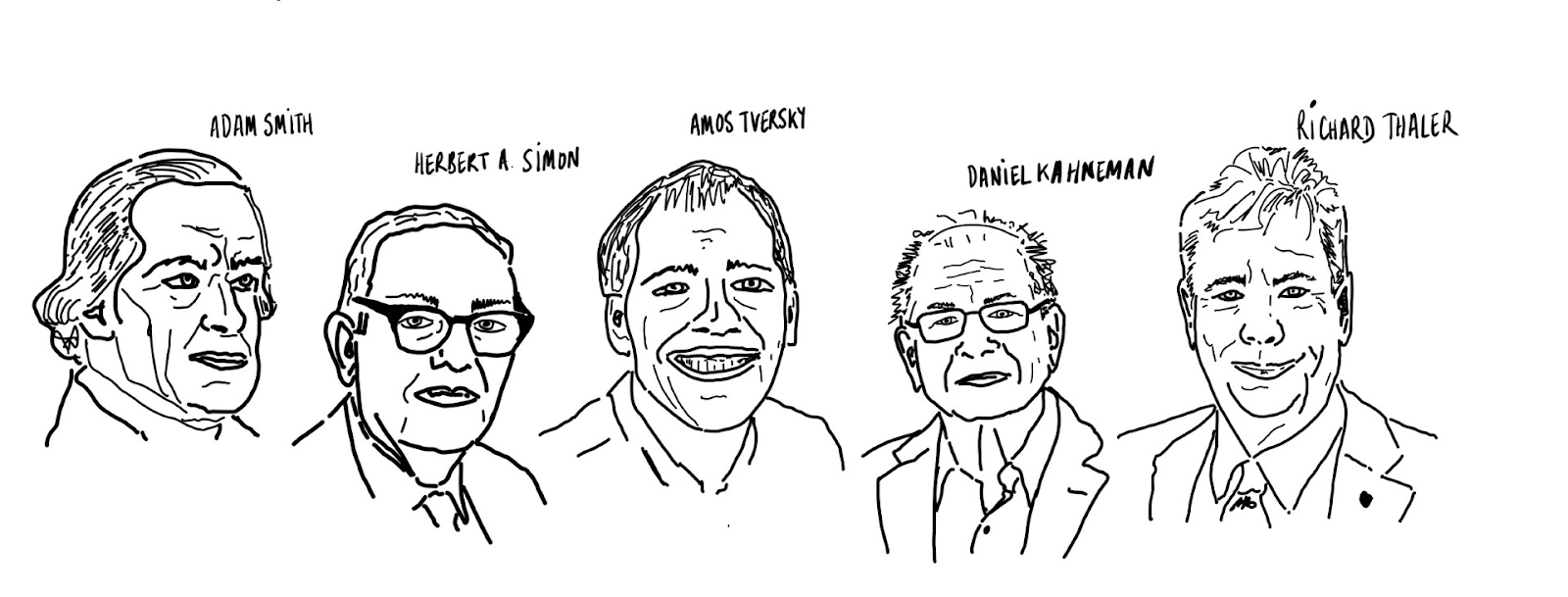
Figure 1 - Some of the most influential behavioral economists
Today, behavioral economics is still considered a relatively young field in economics. For this reason, it is a very attractive domain for prospective economists, psychologists, and researchers — or anyone who feels the itch to refine economic models by accounting for human psychology and irrationality.
Some principles and examples of behavioral economics
Because behavioral economics defies the idea that humans behave rationally when making decisions, it proposes a selection of generalizable situations or principles to illustrate this in practice. These principles are often referred to as cognitive biases and can be thought of as the themes or subtopics studied within behavioral economics. They are backed by experiments and research that demonstrate how human psychology intervenes when people actually make decisions in economic situations.
Anchoring
The anchoring and framing effects were conceptualized by Daniel Kahneman and Amos Tversky. In his book Thinking Fast and Slow (2011), Kahneman explains that anchoring is “the tendency to rely too much on an initial piece of random information—the anchor—which is then used to make subsequent decisions.” For example, say you are looking to buy a shirt. The first one you see costs £20, and the second one £10. The anchoring effect will make you think that the second shirt was “cheap” because you took the price of the first one as a reference, base rate or anchor — influencing your purchasing decision.
Framing
Framing instead happens when “we make choices based on whether they are presented as gains or losses” (Kahneman, 2011). That is, communicating information in one way or another will affect our decision-making. A typical example is when we are presented with two yogurt options in a supermarket, with one labeled as containing “20% fat” and the other one as being “80% fat free.” The second option is generally perceived to have less fat content. This, in turn, will affect the choice the customer makes despite both products being the same.
Loss aversion
The idea that most people have a strong preference for avoiding losses as opposed to acquiring gains is known as loss aversion. This concept was, again, jointly developed by Kahneman and Tversky as a crucial part of their prospect theory. Kahneman and Tversky explain that
One of the basic phenomena of choice under both risk and uncertainty is that losses loom larger than gains (Kahneman and Tversky, 1984; Tversky and Kahneman, 1991). The observed asymmetry between gains and losses is far too extreme to be explained by income effects or by decreasing risk aversion. (“Advances in Prospect Theory: Cumulative Representation of Uncertainty,” 1992, in Choices, Values, and Frames, 2000)
Edited by Daniel Kahneman and Amos Tversky
One of the basic phenomena of choice under both risk and uncertainty is that losses loom larger than gains (Kahneman and Tversky, 1984; Tversky and Kahneman, 1991). The observed asymmetry between gains and losses is far too extreme to be explained by income effects or by decreasing risk aversion. (“Advances in Prospect Theory: Cumulative Representation of Uncertainty,” 1992, in Choices, Values, and Frames, 2000)
This bias often appears when we make decisions that involve risk. For example, people generally prefer investing in safe stocks with lower returns on investment than risky ones with higher returns.
Mental accounting
Introduced by Richard Thaler, mental accounting explains why we often make irrational purchases that we were not anticipating and which we often can’t afford. It refers to the human tendency to compartmentalize our purchases into different mental categories (e.g., entertainment, food, clothes etc.) and assign mental budgets for each of these. For example, say you definitely spent too much on restaurants in the past month, but have come across a beautiful pair of shoes which you cannot resist. Because restaurants and shoes belong to different mental accounting departments (e.g., food vs. clothes), you allow yourself to get those shoes even if your budget doesn’t allow it. In Dollars and Sense (2017), Dan Ariely and Jeff Kreisler cover this bias in depth, providing the below example:
George is worried about his finances—as evidenced by his decision to save money on coffee in the morning—yet nonchalantly spends $200 at the casino. This contradiction occurs, in part, because he puts that casino spending into a different “mental account” than the coffee. By taking his money and converting it into pieces of plastic, he opens an “entertainment” fund, while his other spending still comes out of something like “daily expenses.” This trick helps him to feel differently about the two types of spending, but they’re all really part of one account: “George’s money.”
Dan Ariely and Jeff Kreisler
George is worried about his finances—as evidenced by his decision to save money on coffee in the morning—yet nonchalantly spends $200 at the casino. This contradiction occurs, in part, because he puts that casino spending into a different “mental account” than the coffee. By taking his money and converting it into pieces of plastic, he opens an “entertainment” fund, while his other spending still comes out of something like “daily expenses.” This trick helps him to feel differently about the two types of spending, but they’re all really part of one account: “George’s money.”
Sunk-cost fallacy
Have you ever spent a lot of time, effort or money on something you didn’t like, but had invested too much in to quit? This is the sunk-cost fallacy. A sunk cost is one which, once invested, cannot be recovered. Richard Thaler notably developed this term, and argued that humans encounter sunk costs that psychologically force them to continue with an undertaking even if it is not their best option. For example, a firm that has invested money, time and effort in opening retail stores may be more likely to keep them open, even if they continue to be unprofitable. In this example, the sunk cost fallacy is hindering the firm from making the decision that is welfare maximizing.
Heuristics
In Noise (2021), Kahneman, Sunstein and Sibony define heuristics as being a set of “simplifying operations” or shortcuts used by people to answer difficult questions. They help us make decisions quickly without having to spend a lot of time researching or analyzing information. As Kahneman, Sunstein and Sibony explain,
People who are asked a difficult question use simplifying operations, called heuristics. In general, heuristics, which are produced by fast, intuitive thinking, also known as System 1 thinking, are quite useful and yield adequate answers. But sometimes they lead to biases, which we have described as systematic, predictable errors of judgment. (2021)
Daniel Kahneman, Olivier Sibony, and Cass R. Sunstein
People who are asked a difficult question use simplifying operations, called heuristics. In general, heuristics, which are produced by fast, intuitive thinking, also known as System 1 thinking, are quite useful and yield adequate answers. But sometimes they lead to biases, which we have described as systematic, predictable errors of judgment. (2021)
Heuristics form one of the major cornerstones of behavioral economics. For example, the anchoring effect explained above is often considered and studied as a heuristic. Stereotypes are another good example of heuristics which we commonly encounter in daily life. These often allow us to fill our information gaps and solve queries by making assumptions based on what we have commonly seen in the past.
Closing thoughts
Behavioral economics is a field that is fascinating to not only economists, but academics from an array of disciplines — especially psychologists. Indeed, behavioral economics looks at economic decision-making from a psychological standpoint to bring further realism and accuracy to the study of economics. Over time, pioneers such as Kahneman, Tversky, and Thaler have collaborated and supported one another in order to reach profound conclusions about human economic behavior. The list of cognitive biases and principles studied within BE is wide-ranging, with heuristics, mental accounting and loss aversion just some of the most popular examples. Behavioral economics allows us to understand why we often think with our hearts rather than our heads, and make irrational decisions as a result.
Further reading on Perlego
To find out more about behavioral economics, its themes, and examples, read Behavioural Economics Saved My Dog by Dan Ariely
To find out more about the general theory behind behavioral economics, read A Course in Behavioral Economics by Erik Angner
For more on Thaler’s contributions to behavioral economics in a game theory context, read The Winner’s Curse.
For more about behavioral economics in the context of finance, read Behavioural Economics and Finance by Michelle Baddeley
For more information on behavioral economics, read Ignorance by Milan Kundera and Predictably Irrational: The Hidden Forces that Shape Our Decisions by Dan Ariely
What is behavioral economics in simple terms?
What is the difference between behavioral economics and behavioral science?
Why is behavioral economics important?
Bibliography
Ariely, D. and Kreisler, J. (2017) Dollars and Sense. HarperCollins. Available at: https://www.perlego.com/book/599177/dollars-and-sense-pdf
Kahneman, D. (2012) Thinking Fast and Slow. Penguin.
Kahneman, D., Sibony, O. and Sunstein, C. (2021) Noise. HarperCollins Publishers. Available at: https://www.perlego.com/book/2035336/noise-pdf
Kahneman, D. and Tversky, A. (eds.) (2000) Choices, Values, and Frames. Cambridge University Press. Available at: https://www.perlego.com/book/1704968/choices-values-and-frames-pdf
Simon, H. (2013) Administrative Behavior, 4th Edition. Free Press. Available at: https://www.perlego.com/book/779475/administrative-behavior-4th-edition-pdf
Smith, A. (2010) The Theory of Moral Sentiments. Harriman House. Available at: https://www.perlego.com/book/1415632/the-theory-of-moral-sentiments-the-classic-philosophical-work-on-ethics-and-rights-pdf
Summary and Analysis of Thinking, Fast and Slow (2017). Worth Books. Available at: https://www.perlego.com/book/2417368/summary-and-analysis-of-thinking-fast-and-slow-based-on-the-book-by-daniel-kahneman-pdf
Summary of Misbehaving (2016). Instaread, Inc. Available at: https://www.perlego.com/book/2174479/summary-of-misbehaving-by-richard-h-thaler-includes-analysis-pdf
Sunstein, C. (2014) Why Nudge? Yale University Press. Available at: https://www.perlego.com/book/1088943/why-nudge-the-politics-of-libertarian-paternalism-pdf
Thaler, R. (2015) Misbehaving. Penguin.
MA, Management Science (University College London)
Inés Luque has a Masters degree in Management Science from University College London. During high school, she developed a strong interest in Economics, leading her to win the national Economics prize in her country of nationality, Spain. Her expertise is in the areas of microeconomics, game theory and design of incentives. Inés is passionate about the publishing industry and is currently working in the consulting department of the Financial Times in London.

